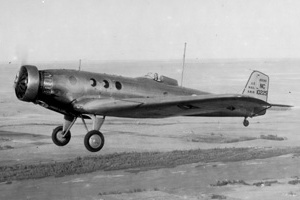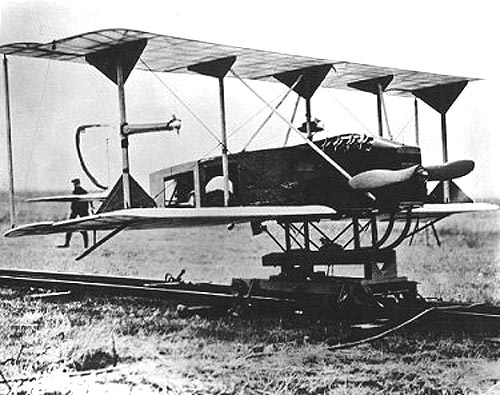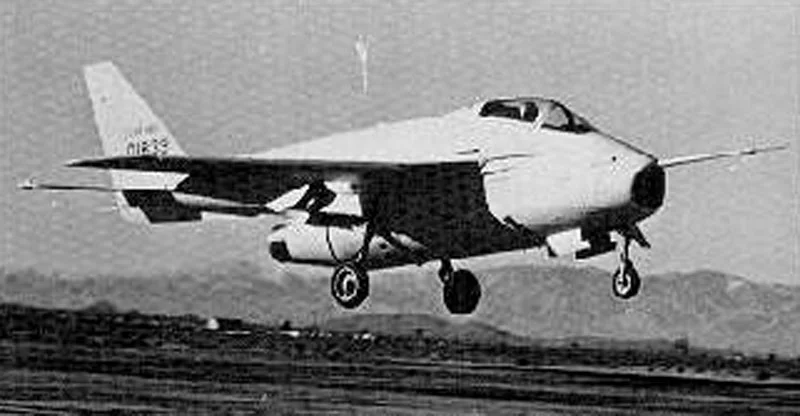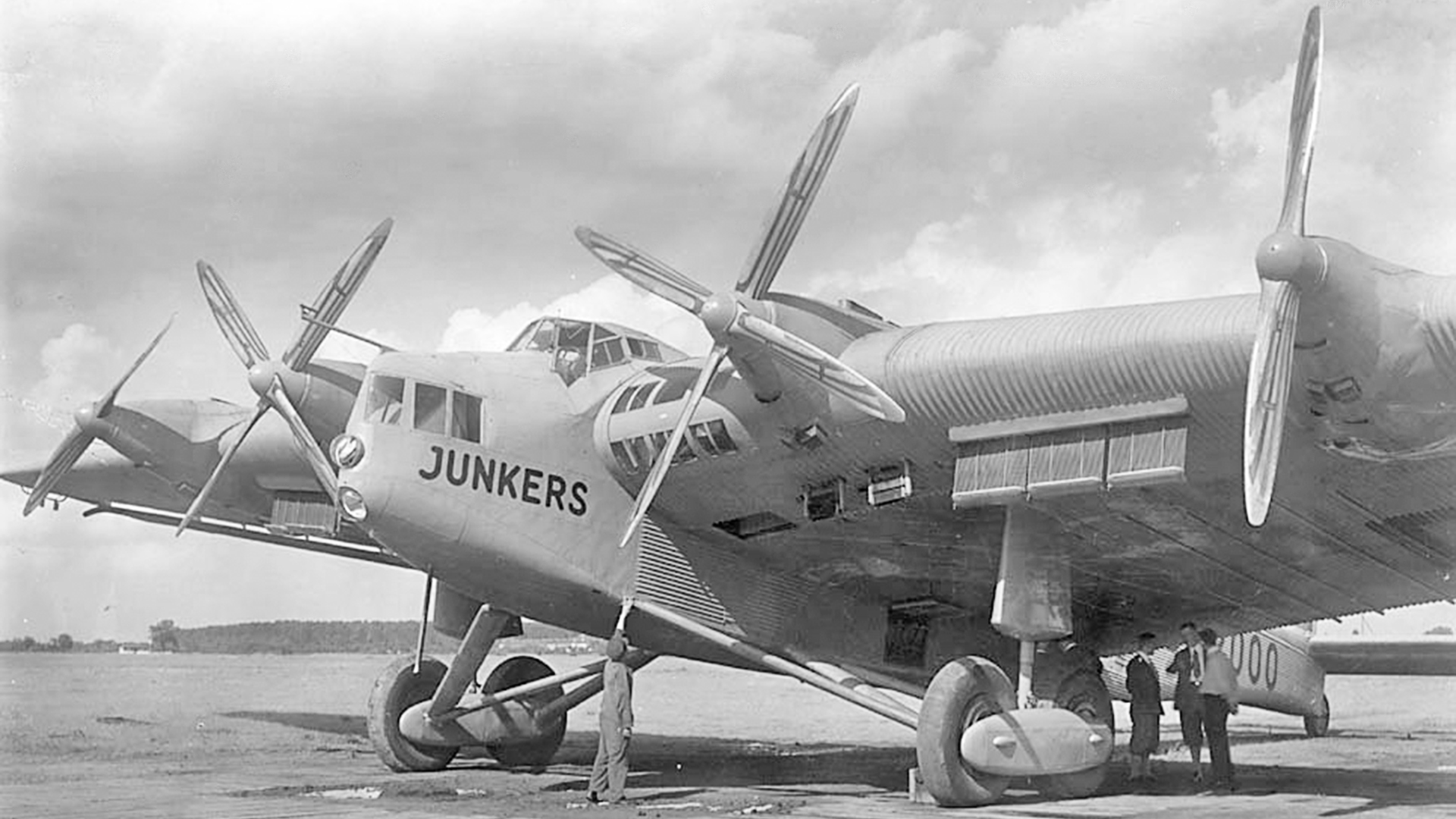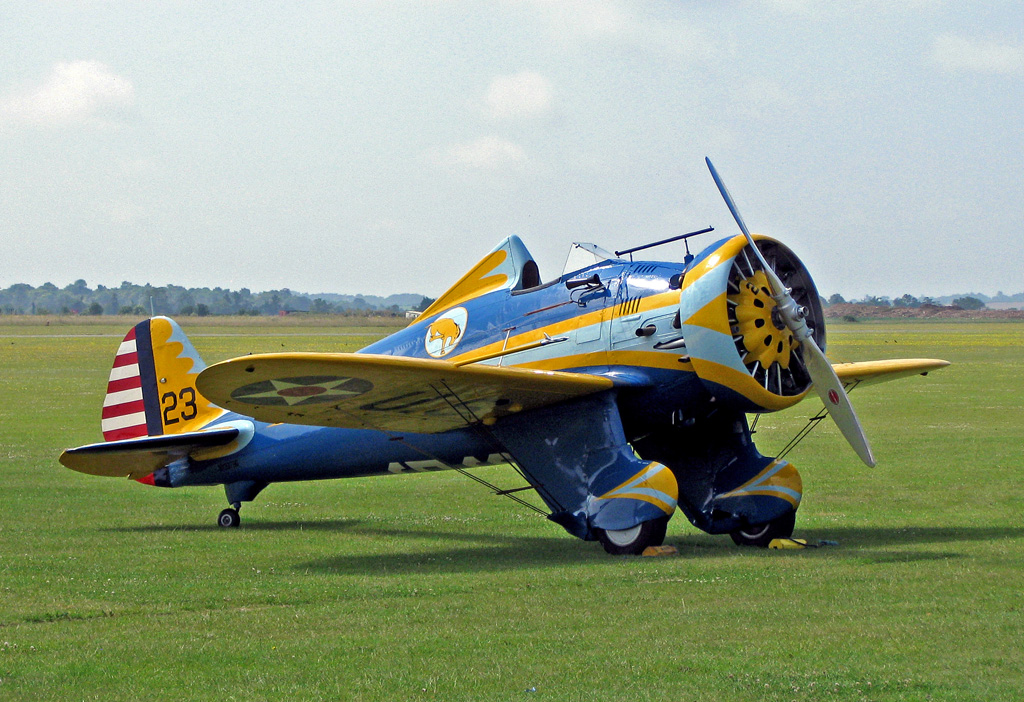The Miles M.52, a supersonic research aircraft, was designed in the UK in the mid-1940s. Miles Aircraft received a contract in October 1943 to create the aircraft as per Air Ministry Specification E.24/43. Until 1945, work was secretive.
These words were penned by Don Brown, who served as the personal assistant to George Miles. George was the technical director at Miles Aircraft Ltd in Reading. In 1943, the company was assigned a significant task.:
‘the most ambitious and advanced research project ever attempted in the history of aeronautics… the design and construction of what was to be the world’s first supersonic aircraft.’
However, in February 1946, the program was terminated by Clement Attlee’s new Labour government due to budget constraints and skepticism about supersonic flight practicality. In September 1946, the project’s existence was disclosed to the public, leading to criticism.
Contents
- Virtually Impossible
- Highly Confidential Project
- Estimated 2,000 lb Thrust
- Groundbreaking
- Abrupt Cancellation
Supersonic Flight was Virtually Impossible
The Air Ministry decided to revive the design, creating unmanned rocket-powered 30% scale models. During testing, a model achieved Mach 1.38 in controllable transonic and supersonic flight, validating M.52’s aerodynamics.
Read More: Weird He 119 Carried its Crew Inside the Nose
The project was canceled, leading to the development of the English Electric Lightning interceptor aircraft. Work on the after-burning Power Jets W.B.2/700 turbojet version was also halted, and Power Jets merged into the National Gas Turbine Establishment.

Miles shared the M.52 research with Bell Aircraft, contributing to the Bell X-1, the first aircraft to break the sound barrier.
Before World War II, the prevailing belief in most of the aviation sector was that achieving manned supersonic flight was virtually impossible, primarily due to the formidable challenge posed by compressibility effects.
In the 1930s, interest in high-speed aerodynamics was limited; however, some notable exceptions included German aeronautical engineer Adolf Busemann, British physicist Sir Geoffrey Taylor, and British engine designer Sir Stanley Hooker.
Read More: France’s NC.3021 Belphégor Was Huge!
Germany invested significantly in Busemann’s swept wing concept for its potential to reduce drag at high speeds, while this research was largely overlooked by Britain and the United States.
The Threat of the Me 163
The situation began to shift only around 1944 when the swept-wing designs of the rocket-powered Messerschmitt Me 163 and the jet-powered Me 262 came to light, prompting a reevaluation of their advantages. By this time, the British Air Ministry had already initiated its own research program.

In the fall of 1943, the Air Ministry issued Specification E.24/43, which sought a jet-powered research aircraft capable of exceeding 1,000 miles per hour (1,600 km/h) in level flight—more than double the existing speed record—and achieving an ascent to 36,000 feet (11,000 meters) in just 1.5 minutes.
The E.24/43 was regarded as “the most visionary official requirement ever issued by a government department,” representing a leap into uncharted territory in terms of engine, airframe, and control technology.
Interestingly, this ambitious specification was originally based on the goal of matching the performance of a rumored German aircraft.
Read More: Italy’s Caproni Ca.90 is the Largest Biplane Ever
The 1,000 mph (supersonic) benchmark stemmed from a mistranslated intercepted message, which erroneously reported a top speed of 1,000 km/h (subsonic). It’s believed this misinterpretation was regarding either the Messerschmitt Me 163A or the Me 262.
In the 1920s, the Miles Aircraft company emerged, gaining recognition in the 1930s for its innovative and affordable light aircraft. Notable models like the Miles Magister and Miles Master trainers were extensively used by the RAF for pilot training.
Miles M.52 Highly Confidential Project
Despite focusing on relatively simple technology, Miles maintained strong ties with the Air Ministry and the Royal Aircraft Establishment (RAE), frequently proposing designs for advanced aircraft in response to ministry specifications.
Subsequently, Miles was selected for a highly confidential project to fulfill the demands of Specification E.24/43. It has been suggested that this involvement was partly to settle a dispute regarding a separate contract mishandled by the Ministry of Aircraft Production.
Wood indicates that Minister of Aircraft Production Sir Stafford Cripps was particularly impressed by the designs and development team at Miles, leading to their selection for this project.

F. G. Miles from the Miles Aircraft company was called to the Ministry of Aircraft Production for a meeting with Ben Lockspeiser, the director of scientific research. Lockspeiser briefed him on the complexities and challenges of developing such an advanced aircraft.
The project demanded utmost secrecy, with Miles responsible for the airframe’s development and manufacturing, while Frank Whittle’s Power Jets company worked on developing a suitable engine.

Miles would collaborate with and receive support from the Royal Aircraft Establishment in Farnborough and the National Physical Laboratory. On 8 October 1943, Miles officially received authorization to proceed from Air Marshal Ralph Sorley and promptly began setting up secure facilities dedicated to the project.
Miles M.52 Early development
Miles faced a lack of relevant design information. So, he turned to ballistics for inspiration. He thought that since bullets reach supersonic speeds, similar aerodynamics might work for aircraft.
Consequently, he designed the aircraft with a conical nose and very thin, sharp-edged wings. This design differed from early jet aircraft.
Read More: The NC.1071 Wanted to Fall Apart on Every Flight
They usually had round noses and thick wings, making them less effective at high subsonic speeds. In 1943, RAE tests on Spitfires showed that drag was a major issue for high-speed aircraft.
Another key feature was a power-operated stabilator, or all-moving tail. This was crucial for controlling supersonic flight.

Traditional elevators on tailplanes became ineffective at high subsonic speeds. This was due to shockwaves and shifting pressure centers.
These factors made manual control by pilots difficult, especially in dives. Control reversal was a major problem in early transonic flight. It caused flight inputs to reverse at high speeds, leading to accidents.
An all-flying tail was essential to safely break the transonic barrier. The M.52 was the first to use this solution, now common in high-speed aircraft.
Estimated 2,000 lb Thrust
The initial version of the aircraft was set to fly using Frank Whittle’s Power Jets W.2/700 engine. This engine, with an estimated 2,000 lb thrust, was good for subsonic level flight.
However, it could achieve transonic speeds in a shallow dive. Wood praised the engine for its innovative features.
Read More: The V-2 Rocket What Happened to This Superweapon?
To reach supersonic speeds, the M.52 needed an upgraded W.2/700 engine. This advanced version incorporated a reheat jetpipe, or afterburner.
The plan was to burn extra fuel in the tailpipe. This would use the exhaust’s unused oxygen and avoid overheating the turbine blades.

An augmentor fan, powered by the engine, was to provide extra air. It would draw air around the engine through ducts. These improvements were expected to add 1,620 lb of thrust at 36,000 ft and 500 mph. Even more thrust was anticipated at speeds over 500 mph.
The M.52’s design changed a lot during development. The overseeing committee worried about the biconvex wing.
They feared it wouldn’t allow high enough altitude for dive tests. They considered making the thin wing thicker or adding a section to increase the span.
Read More: The WW2 Lockheed L-133 Starjet Experiment
As the project’s weight increased, power concerns arose. Solutions like rocket assistance or extra fuel tanks were explored. Another idea was to turn the M.52 into a parasite aircraft.
It would launch from a bomber at high altitude. The projected landing speed of 160 to 170 mph was high for the time. Its small undercarriage track was also a concern, but this arrangement was eventually accepted.
M.52 Groundbreaking
To reach groundbreaking speeds, the M.52 incorporated numerous advanced features. These features came from extensive studies in supersonic aerodynamics.
Wood described the M.52 as embodying the qualities of high-performance aircraft from the late fifties and early sixties. The M.52 had a cylindrical fuselage made of high tensile steel with a light alloy covering. Its design minimized the cross-section around the engine. Fuel tanks were arranged like a saddle above the engine.
The engine was placed to align its center of gravity with the airframe. The wings, thin and biconvex, attached just behind the engine. The innovative nose shock cone slowed incoming air to subsonic speeds efficiently.
A retractable tricycle undercarriage was another feature. The nose wheel sat between the pilot’s feet, and the main wheels folded under the wings.
The M.52’s thin “Gillette” wings, proposed by Jakob Ackeret, minimized drag. These wings were clipped to avoid the nose’s conical shock wave.
Test Pilot Eric Brown
Both wide-chord ailerons and split-flaps were on the wings. Since such a high-speed wing was new, Miles made a full-scale wooden model for tests. They also tested other parts, like the tailplane, at low speeds.
The Power Jets W.2/700 turbojet was the M.52’s initial engine. Early models used a less advanced version, limiting them to subsonic speeds.
They lacked the later model’s afterburner and augmentor fan. The M.52 could also accommodate different engines, including the Rolls-Royce Avon jet and liquid-fuel rockets.
Pilot Eric Brown would have flown the M.52 from a pressurized cockpit inside the shock cone. He would have been semi-prone behind a curved windscreen.
In emergencies, the entire cockpit could eject using explosive bolts. Air pressure would push the capsule away, and a parachute would slow it down for the pilot’s safe exit.
The M.52, designed as a research aircraft, was fully equipped for data collection. It had automated instrument recorders and extensive strain gauging connected to an oscilloscope.
Three M.52 Prototypes
In 1944, Miles nearly finished the M.52’s design and started building three prototypes. That year, the Air Ministry agreed to share high-speed research with the United States. Dennis Bancroft, Miles’ Chief Aerodynamicist, revealed they shared the M.52’s plans with Bell Aircraft.
But the U.S. didn’t reciprocate with data. Unbeknownst to Miles, Bell was making their own rocket-powered supersonic aircraft. They struggled with control issues due to a conventional tail. Miles and RAE’s research showed a variable-incidence tail was promising. Later, pilot Chuck Yeager confirmed this in his flights. His tests influenced future supersonic designs, all featuring an all-moving tailplane or delta wing.
M.52 the Gillette Falcon
In 1943, Miles received a Miles M.3B Falcon Six, previously used for RAE wing tests, for low-speed flight testing of the M.52 project. They equipped this aircraft with a full-size wooden model of the M.52 wing, new test instruments, and a different undercarriage.
Due to its thin, sharp-edged wings, they nicknamed it the “Gillette Falcon.” On August 11, 1944, the Gillette Falcon completed its first flight. These tests showed good aileron function but difficult landings without flaps. The wing’s design reduced the area by 12%, raising landing speed from 40 to 61 mph.
For high-speed tests, they fitted the M.52’s flying tail to a Supermarine Spitfire, the fastest aircraft then available.
RAE test pilot Eric Brown reported successful tests in October and November 1944, reaching Mach 0.86 in a high-altitude dive. They also fitted the Gillette Falcon with the flying tail, leading to low-speed tests at the RAE in April 1945.
Miles built their own wind tunnel for the first M.52 aerodynamic tests. This required a small-scale foundry on-site for security and precise component production.
By August 1945, the M.52 design was well-established, with advanced development. By early 1946, 90% of the design work was complete, component assembly was progressing, and they had made the jigs and augmentor fan. They expected the first M-52 prototype’s maiden flight that summer.
Abrupt Cancellation of Miles M.52
In February 1946, Lockspeiser abruptly informed Miles about the M.52 project’s immediate cancellation. Frank Miles was shocked and confused, recalling no warnings of such a decision. At their last meeting, everyone, including Ministry and Power Jets representatives, seemed optimistic.
Miles sought reasons from Lockspeiser, who cited economic constraints and skepticism about supersonic flight. Meanwhile, the postwar Labour government, led by Clement Attlee, had made significant budget cuts, likely influencing the project’s end. Wood believed the cancellation was a political decision by the Attlee Government.
Simultaneously, Frank Whittle left Power Jets due to disagreements with official policy. At this point, the first M.52 was 82% complete and close to its initial test flights. The planned tests aimed to reach Mach 1.07 by late 1946.
Miles tried to save the project, proposing a modified M.52 with a German rocket engine and automated controls. This proposal was rejected.
Under the Official Secrets Act, the public remained unaware of the M.52’s near completion and abrupt cancellation. The Ministry barred Miles from holding press conferences about the M.52, and omitted the project from their own press briefings.
When the M.52’s existence was finally disclosed in September 1946, it sparked intense media interest. The Ministry of Supply vaguely commented, suggesting alternate research paths were being pursued.
Wood labeled this response a smokescreen to hide the lack of supersonic expertise. Lockspeiser’s role in the cancellation became known, leading to media criticism.
In February 1955, a white paper revealed another official reason for the cancellation: the high risk of manned supersonic flight with limited knowledge at the time. This paper admitted that the decision had delayed Britain’s aeronautical progress.
By 1947, Miles Aircraft Ltd faced receivership and restructuring. Handley Page later acquired its assets, including the M.52 design data.
Back on the Drawing Board
Instead of reviving the M.52, the government chose a new program. This program involved expendable, pilotless missiles.
They planned 24 flights with these models, testing six wing and control configurations. This included both straight and swept wing designs. Wood described this shift as Britain’s exit from the supersonic manned aircraft race.

The government awarded the missile contract to Vickers-Armstrongs, not Miles. Barnes Wallis, a renowned engineer, led Vickers’ design team. Wallis’ team handled design, while the RAE developed the engine. Their creation was a 30% scale M.52 model, radio-controlled and rocket-powered by an Armstrong Siddeley Beta engine.
Fifteen months passed between ending the manned M.52 and the first test model’s readiness. They launched this model from a modified de Havilland Mosquito, using a custom rack.
The model’s autopilot leveled it before igniting the rocket motor. Within 70 seconds, it could hit Mach 1.3, then crash into the ocean. They transmitted flight data back to a ground station in the Scilly Isles.
End of the Dream
The first model launch was on 8 October 1947, but it exploded shortly after release. Days later, the Bell X-1 broke the sound barrier.
The Daily Express criticized the government’s decision to scrap the M.52. On 10 October 1948, a second rocket reached Mach 1.38 in stable flight. However, it veered off into the Atlantic, unresponsive to radio commands.
After this test, they canceled further work on the project, replacing it with Ministry of Supply Experimental Requirement ER.103. They cited “high cost for little return” as a reason for the cancellation. Wood criticized the wasted funds, noting the value of a piloted M.52.
Many M.52 design principles reemerged in the 1950s with aircraft like the Fairey Delta 2 and English Electric Lightning. Other 1940s and 50s aircraft, like the X-1 and F-100, also echoed these principles.
The M.52’s wing design resembled the German Wasserfall rocket. The English Electric P.1 and others developed from requirement ER.103, drawing from M.52 and German research.
Miles M.52 Gateway to Supersonic Flight – Capt Eric Brown in association with Dennis Bancroft was published in 2013. It tells the whole unsavoury story in great detail much of which had never been published before including the meddling of Barnes Wallis.
It runs to over 200 pages with many photos and the original Churchill Directive, etc. It put the British Aircraft industry 10 years behind where they should have been and that was impossible to catch up with. That the US claimed AFTER Miles had been directed by the government to give complete access to the visitors that it was against their laws is fantasy.
The Book

In December 1943, a top secret contract (E.24/43) was awarded to Miles Aircraft. The contract was to build the world’s first supersonic jet capable of 1000mph. The only reliable source of data on supersonic objects came from the Armament Research Dept and their wind tunnel tests on ammunition. From this, Miles developed an exceptionally thin-winged, bullet-shaped aircraft. the research was inexplicably passed to the Americans in 1944. By December 1945, one prototype was virtually complete.
The second, destined for an attempt at the sound barrier was 80 per cent complete. In February 1946, Capt Eric Brown was confirmed as the test pilot and October 1946 was set for the supersonic trials. However, on 12 February 1946, Miles were ordered to stop production. No plausible explanation was given for the cancellation when Britain was within six months of breaking the sound barrier. Eric Brown and others directly involved including Dennis Bancroft, the Chief Aerodynamicist on the Miles M.52, have now come together to try and finally solve the mystery behind the cancellation.
Dennis Bancroft, the chief aerodynamicist at Miles, later asserted that the Bell Aircraft company had access to the M52’s designs and research.
This was part of a 1944 knowledge-sharing agreement with the US. However, he claimed the US did not reciprocate with their data. At that time, the X-1 was reportedly struggling with conventional tail designs. The M52’s variable incidence tail reportedly inspired a similar feature in the X-1.
The idea that the British influenced the iconic Bell X-1 is often contested in the US. History tends to favor the winners. Yet, with additional funding in Britain, the Miles M.52 might have challenged Chuck Yeager and the X-1.


